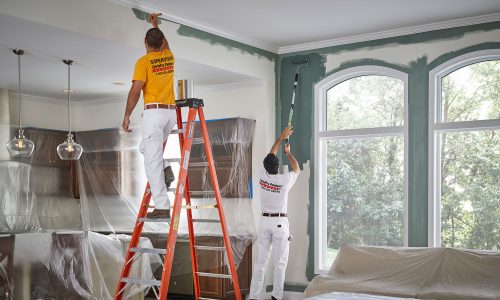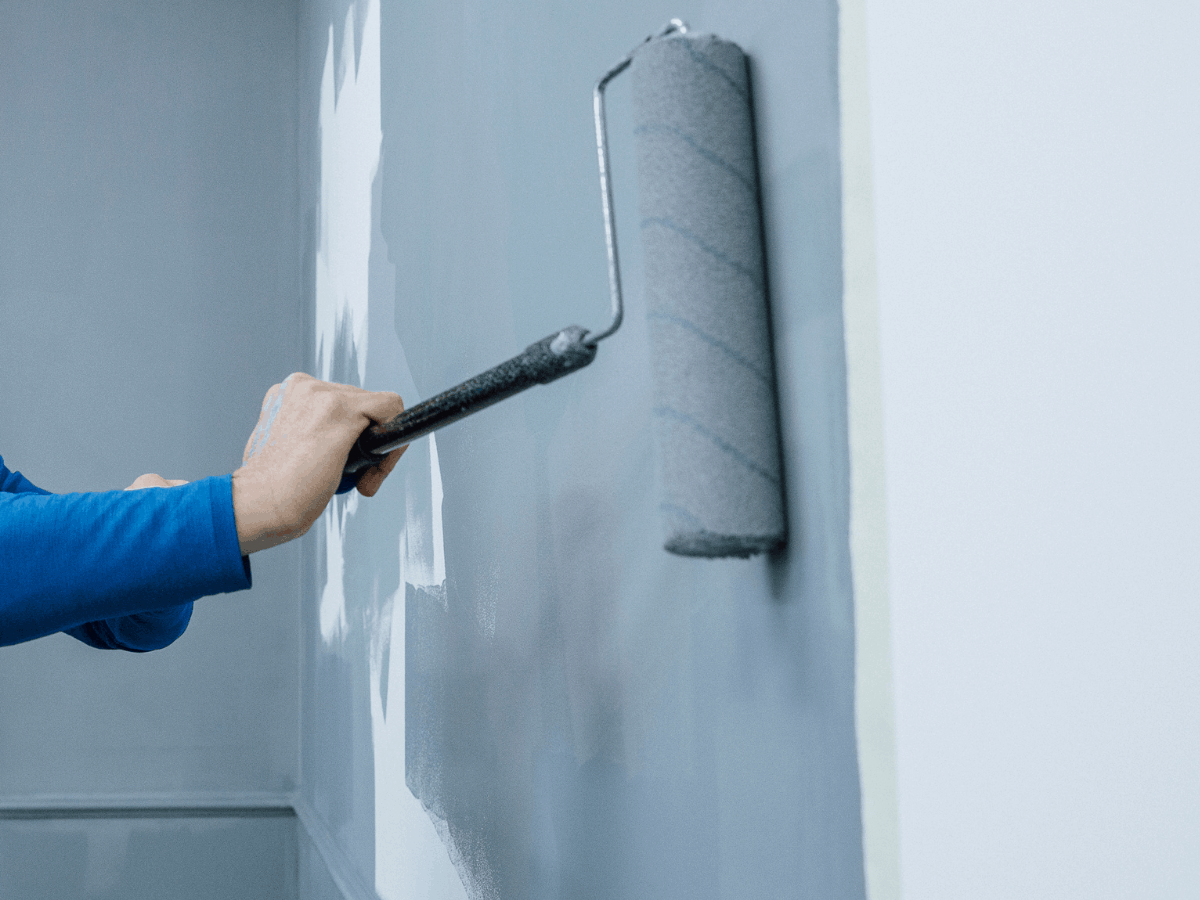Reliable Lakewood Interior Painting Services for Long-Lasting Results
Wiki Article
Enhance Your Interior Decoration With Comprehensive Shade Consultation
The combination of shade consultation into interior decoration offers a distinct chance to improve and boost the psychological and aesthetic resonance of an area. By involving with a skilled shade consultant, you can navigate the intricacies of shade option, ensuring that your choices not only enhance architectural functions yet also resonate with personal style and emotional influence. This strategic partnership can considerably influence the general environment of your atmosphere, promoting a sense of harmony and function. Recognizing the subtleties of this procedure is necessary-- what vital aspects should be taken into consideration to attain optimum outcomes?Benefits of Shade Assessment

Furthermore, shade appointment aids in taking full advantage of all-natural light and enhancing spatial assumption. Lighter colors can make a room appear more extensive, while darker tones develop an intimate setting. Cleveland Metro Painting Specialists. This calculated application of color can significantly influence the overall setting of any interior area
Furthermore, expert consultants have a detailed understanding of ageless classics and existing fads, making sure that the selected shades will certainly continue to be attractive in time. This foresight can save clients from expensive redesigns in the future. Finally, color examination empowers customers by giving them with a clear vision and instructions, promoting confidence in their style options and eventually resulting in a more rewarding and successful indoor style result.
Understanding Color Psychology
The value of color psychology in indoor style can not be overemphasized, as it looks into the emotional and psychological effects that different shades can stimulate in individuals. Colors can influence state of mind, behavior, and also productivity, making them a crucial factor to consider in any type of design task.As an example, cozy colors such as red, orange, and yellow are usually related to power and warmth. They can boost feelings of exhilaration and comfort, making them ideal for social spaces like living spaces or kitchens. On the other hand, cool shades like blue, green, and purple have a tendency to stimulate calmness and harmony, making them ideal for bed rooms or reflection areas.
Furthermore, making use of neutral tones can create a balanced setting by enabling the bolder colors to stick out without overwhelming the detects. Comprehending these emotional influences allows designers to develop spaces that not only look cosmetically pleasing yet also advertise psychological health.
Integrating color psychology into interior design includes a thoughtful option of tones tailored to the intended function of each area, eventually boosting the overall experience for its occupants. This understanding is vital for attaining a practical and unified indoor setting.
The Shade Wheel Explained
Understanding the relationships between colors is vital for efficient indoor style, and the color wheel functions as an important device in this procedure. The color wheel, developed by Isaac Newton in the 17th century, highlights the range of shades set up in a circular style. It makes up main colors-- red, blue, and yellow-- that can not be created by mixing various other shades. Additional shades, developed by combining primary shades, consist of eco-friendly, orange, and purple. Tertiary shades result from blending a key and an additional color, resulting in hues such as blue-green and red-orange.The shade wheel helps designers comprehend the connections between shades, including corresponding, analogous, and triadic plans. Corresponding shades, positioned contrary each other on the wheel, develop vibrant contrasts that can stimulate a space.
Using the shade wheel in interior layout not only improves aesthetic appeal but likewise evokes certain emotions and ambiences, making it a critical reference for color assessment. Recognizing these relationships inevitably empowers developers to develop spaces that are both practical and aesthetically fascinating.
Picking the Right Palette
A well-chosen shade plan can link a room, enhance its features, and stimulate preferred emotions. Different areas serve different features and need schemes that show their designated use; for instance, relaxing colors such as soft blues or environment-friendlies work well in bed rooms, advertising relaxation.Next, consider the all-natural light available. Light can substantially change how colors appear, so it is important to examine the space at different times of the day. Additionally, think about existing building elements and furnishings. An unified scheme should complement these features, developing a cohesive look throughout the room.
When picking shades, utilize the 60-30-10 regulation, which recommends that 60% of the room should be a dominant color, 30% a second shade, and 10% an accent color. This ratio guarantees balance her latest blog and visual passion (Cleveland Metro Painting Specialists). Finally, example colors on the wall surfaces prior to dedicating, as this permits you to see exactly how the shades engage with each other and the general atmosphere they develop in your interior decoration task.
Working With a Shade Consultant

When collaborating with a color expert, the process commonly begins with an initial assessment. During this conference, you'll review your vision, choices, and the existing elements in your space. The professional will certainly analyze your needs and may recommend specific shade palettes that line up with your goals.
After developing a direction, the professional will supply samples and visual aids to help you envision the suggested color design. This step is important, as colors can show up in a different way under differing lighting conditions.
Additionally, a shade expert can guide you in picking corresponding furnishings, art work, and accessories to harmonize with your selected scheme. By collaborating very closely, you can accomplish a polished visual that boosts your insides and creates an inviting ambience. Ultimately, the know-how of a shade consultant can significantly improve the overall impact of your design project.
Verdict
In recap, detailed color consultation works as a crucial device for enhancing interior decoration. By leveraging professional expertise of color psychology and spatial dynamics, a customized shade combination can be developed to stimulate certain emotions and produce an unified environment. This strategic approach not only cultivates a natural layout narrative but also minimizes the risk of costly redesigns. Inevitably, engaging with a color professional guarantees an educated and visually pleasing end result, boosting the total experience of the room.By involving with have a peek at this site an experienced shade consultant, you can browse the intricacies of color choice, ensuring that your selections not only complement architectural functions but additionally resonate with personal style and mental influence. It makes up key colors-- red, blue, and yellow-- that can not be created by blending other shades.The shade wheel aids developers realize the connections in between shades, including corresponding, similar, and triadic systems.When picking shades, make next page use of the 60-30-10 rule, which suggests that 60% of the room need to be a dominant color, 30% a secondary color, and 10% an accent shade. By leveraging specialist expertise of color psychology and spatial dynamics, a tailored shade combination can be established to evoke particular emotions and develop an unified atmosphere.
Report this wiki page